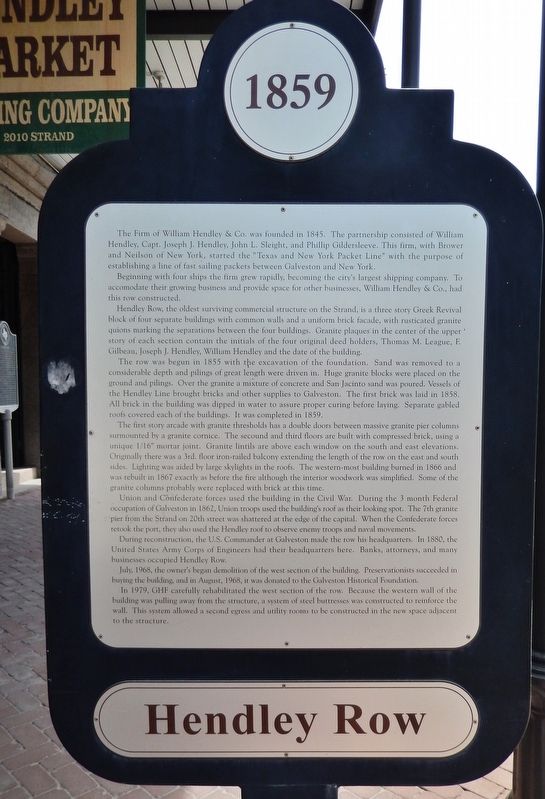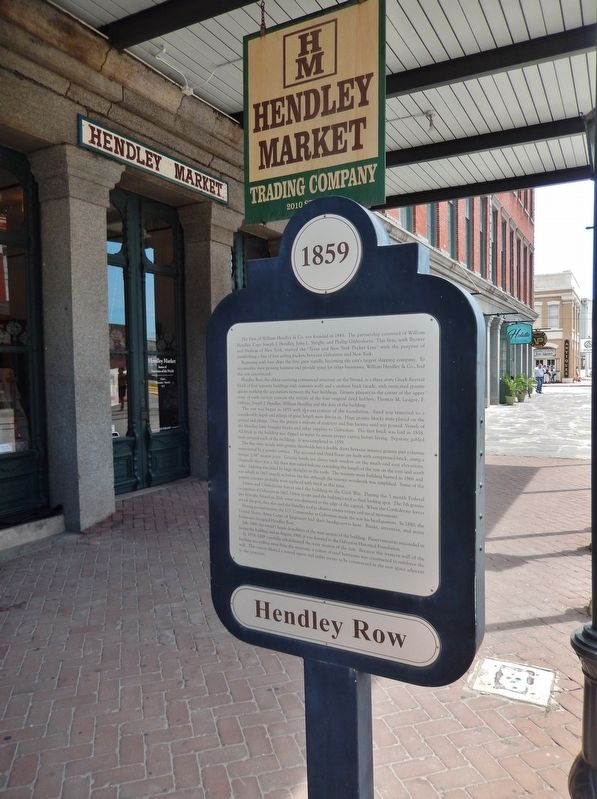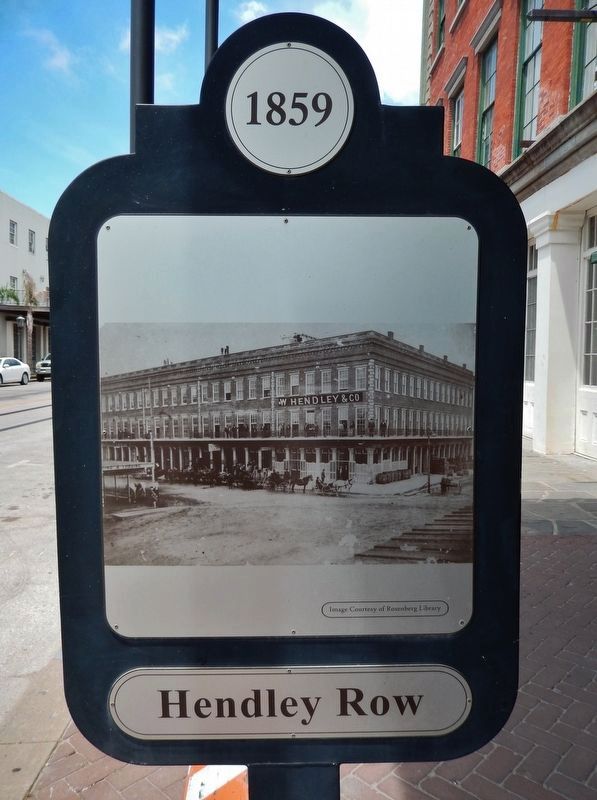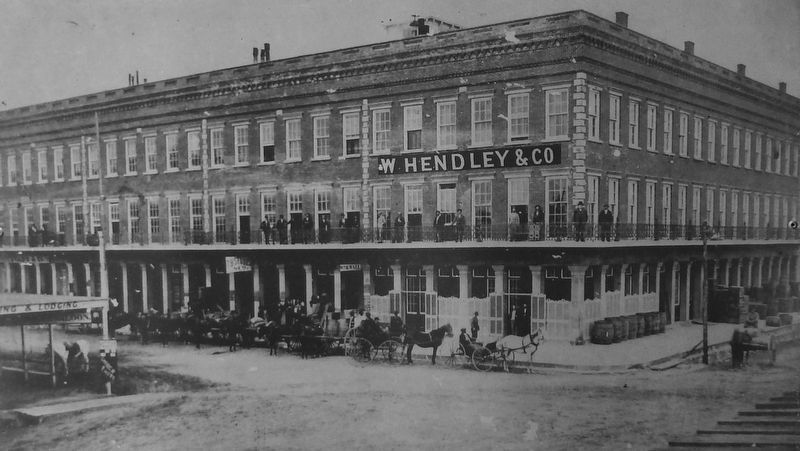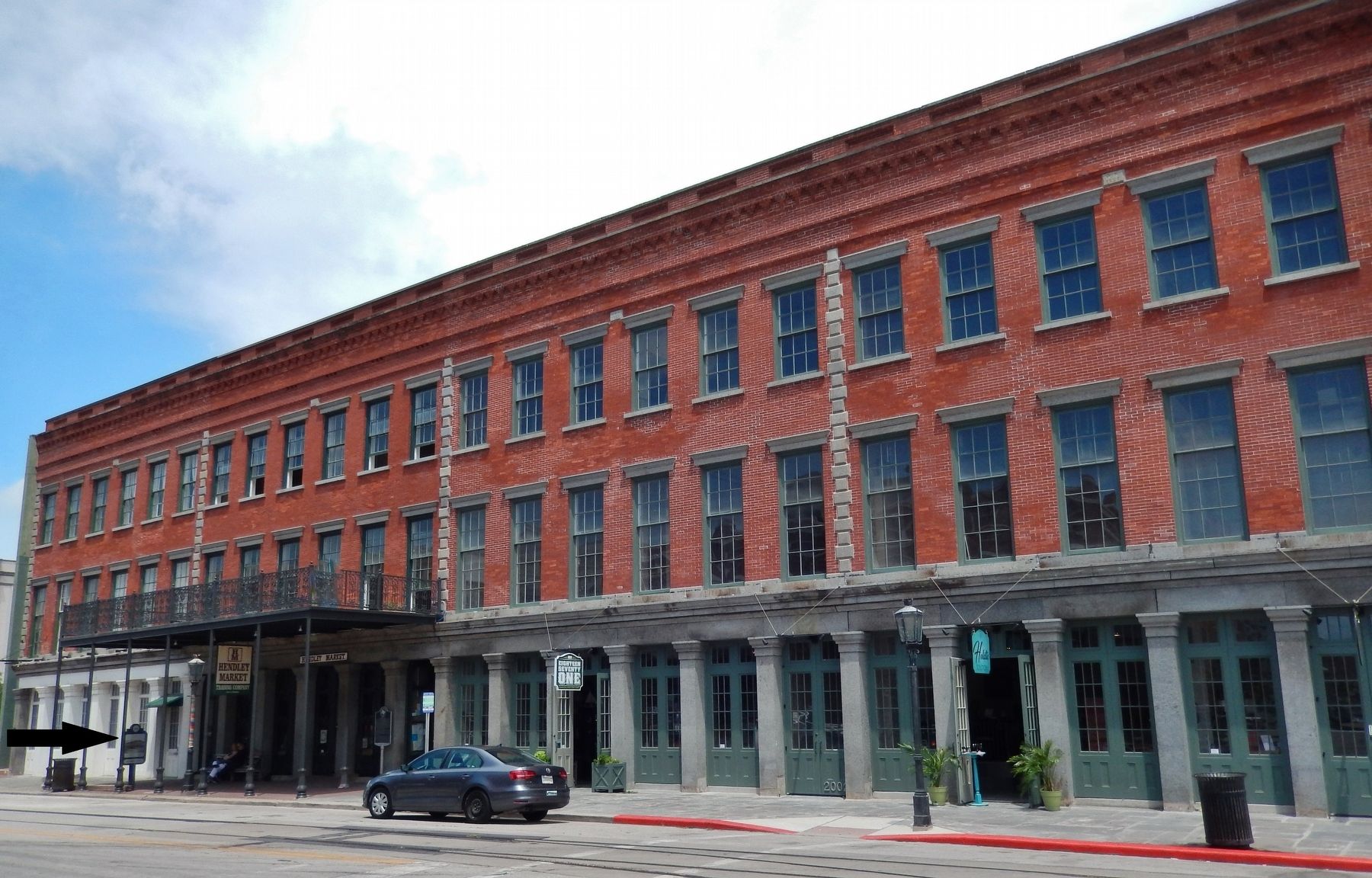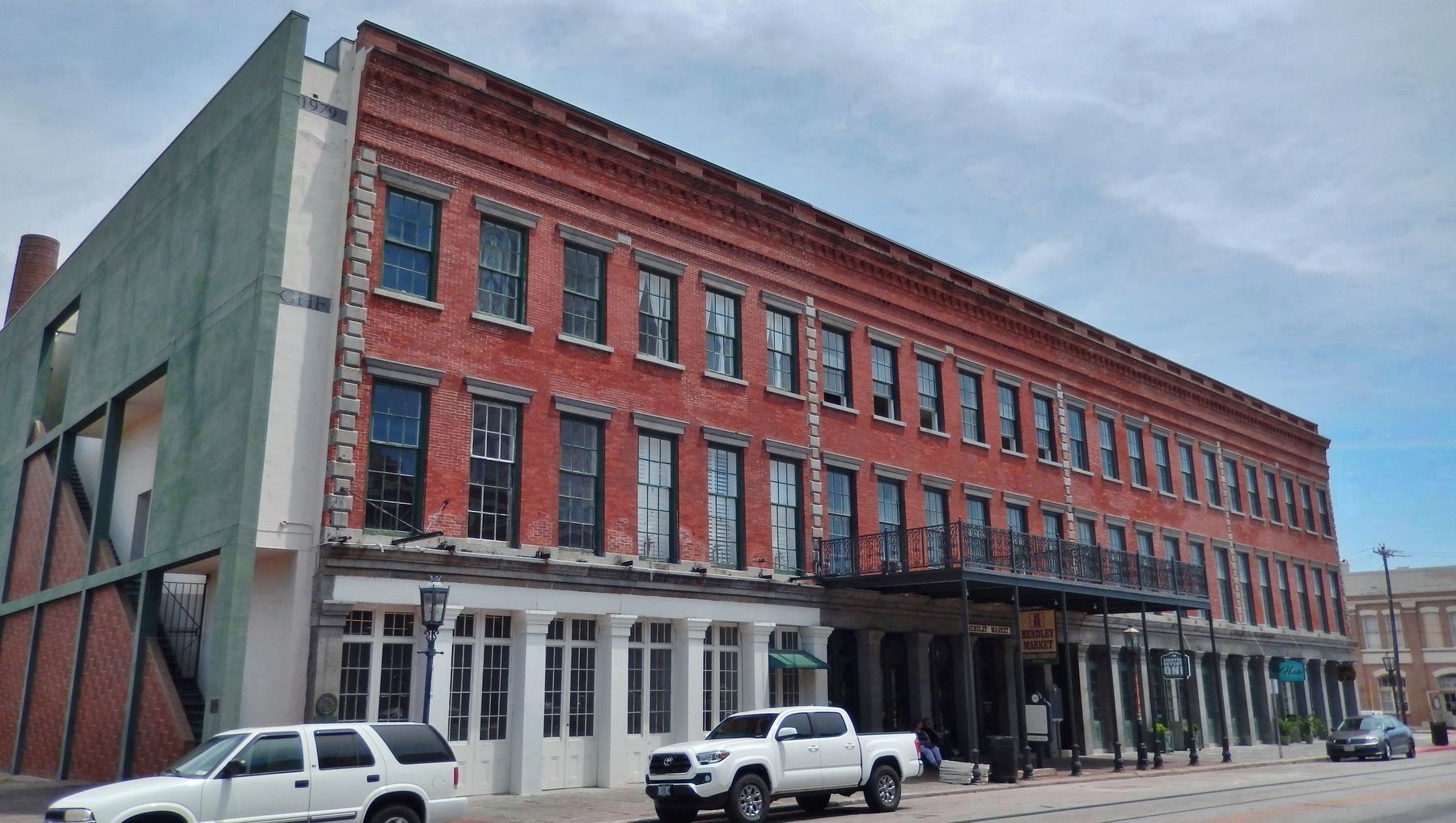Galveston in Galveston County, Texas — The American South (West South Central)
Hendley Row
1859
The Firm of William Hendley & Co. was founded in 1845. The partnership consisted of William Hendley, Capt. Joseph J. Hendley, John L. Sleight, and Phillip Gildersleeve. This firm, with Brower and Neilson of New York, started the "Texas and New York Packet Line" with the purpose of establishing a line of fast sailing packets between Galveston and New York.
Beginning with four ships the firm grew rapidly, becoming the city's largest shipping company. To accommodate their growing business and provide space for other businesses, William Hendley & Co., had this row constructed.
Hendley Row, the oldest surviving commercial structure on the Strand, is a three story Greek Revival block of four separate buildings with common walls and a uniform brick facade, with rusticated granite quoins marking the separations between the four buildings. Granite plaques' in the center of the upper story of each section contain the initials of the four original deed holders, Thomas M. League, E Gilbeau, Joseph J. Hendley, William Hendley and the date of the building.
The row was begun in 1855 with the excavation of the foundation. Sand was removed to a considerable depth and pilings of great length were driven in. Huge granite blocks were placed on the ground and pilings. Over the granite a mixture of concrete and San Jacinto sand was poured. Vessels of the Hendley Line brought bricks and other supplies to Galveston. The first brick was laid in 1858. All brick in the building was dipped in water to assure proper curing before laying. Separate gabled roofs covered each of the buildings. It was completed in 1859.
The first story arcade with granite thresholds has a double doors between massive granite pier columns surmounted by a granite cornice. The second and third floors are built with compressed brick, using a unique 1/16" mortar joint. Granite lentils are above each window on the south and east elevations. Originally there was a 3rd. floor iron-railed balcony extending the length of the row on the east and south sides. Lighting was aided by large skylights in the roofs. The western-most building burned in 1866 and was rebuilt in 1867 exactly as before the fire although the interior woodwork was simplified. Some of the granite columns probably were replaced with brick at this time.
Union and Confederate forces used the building in the Civil War. During the 3 month Federal occupation of Galveston in 1862, Union troops used the building's roof as their looking spot. The 7th granite pier from the Strand on 20th street was shattered at the edge of the capital. When the Confederate forces retook the port, they also used the Hendley roof to observe enemy troops and naval movements.
During reconstruction, the U.S. Commander at Galveston made the row his headquarters. In 1880, the United States Army Corps of Engineers had their headquarters here. Banks, attorneys, and many businesses occupied Hendley Row.
July, 1968, the owner's began demolition of the west section of the building. Preservationists succeeded in buying the building, and in August, 1968, it was donated to the Galveston Historical Foundation.
In 1979, GHF carefully rehabilitated the west section of the row. Because the western wall of the building was pulling away from the structure, a system of steel buttresses was constructed to reinforce the wall. This system allowed a second egress and utility rooms to be constructed in the new space adjacent to the structure.
Topics. This historical marker is listed in these topic lists: Architecture • Industry & Commerce • Man-Made Features • War, US Civil. A significant historical year for this entry is 1859.
Location. 29° 18.48′ N, 94° 47.489′ W. Marker is in Galveston, Texas, in Galveston County. Marker is on Strand Street west of 20th Street, on the right when traveling west. Marker is located in front of the Hendley Market building, 1 of 4 buildings that comprise "Hendley Row". Touch for map. Marker is at or near this postal address: 2010 Strand Street, Galveston TX 77550, United States of America. Touch for directions.
Other nearby markers. At least 8 other markers are within walking distance of this marker. Hendley's Row (a few steps from this marker); The Hendley Building (a few steps from this marker); Galveston Historical Foundation (a few steps from this marker); Kuhn's Wharf (about 300 feet away, measured in a direct line); Mallory-Produce Building (about 400 feet away); American National Insurance Company (about 400 feet away); C. F. Marschner Building (about 500 feet away); Old Galveston Market House and City Hall (about 500 feet away). Touch for a list and map of all markers in Galveston.
Regarding Hendley Row. Recorded Texas Historic Landmark (1981)
Also see . . . History of the Strand. During the Civil War, when the Union forces blockaded Galveston, many businesses on the Strand closed shop and moved to Houston for the duration of the war. The Confederate forces on the island fought from every corner of the street. The Hendley buildings and several others sustained some damage from shots and shells. Most businesses returned after the war to enter a period of prosperity that lasted until the early 1900s. The Galveston hurricane of 1900 proved to be a turning point for the Strand. Many of the buildings suffered serious damage. In the rebuilding process, businesses moved off the Strand and away from the wharfs. The area became a warehouse district. In 1973 the Galveston Historical Foundation initiated the Strand Revolving Fund, a catalyst in subsequent years for dramatic restoration and adaptive use in the Strand Historic District. (Submitted on June 24, 2018, by Cosmos Mariner of Cape Canaveral, Florida.)
Credits. This page was last revised on June 25, 2018. It was originally submitted on June 24, 2018, by Cosmos Mariner of Cape Canaveral, Florida. This page has been viewed 378 times since then and 34 times this year. Photos: 1, 2, 3, 4, 5, 6. submitted on June 24, 2018, by Cosmos Mariner of Cape Canaveral, Florida. • Bernard Fisher was the editor who published this page.
